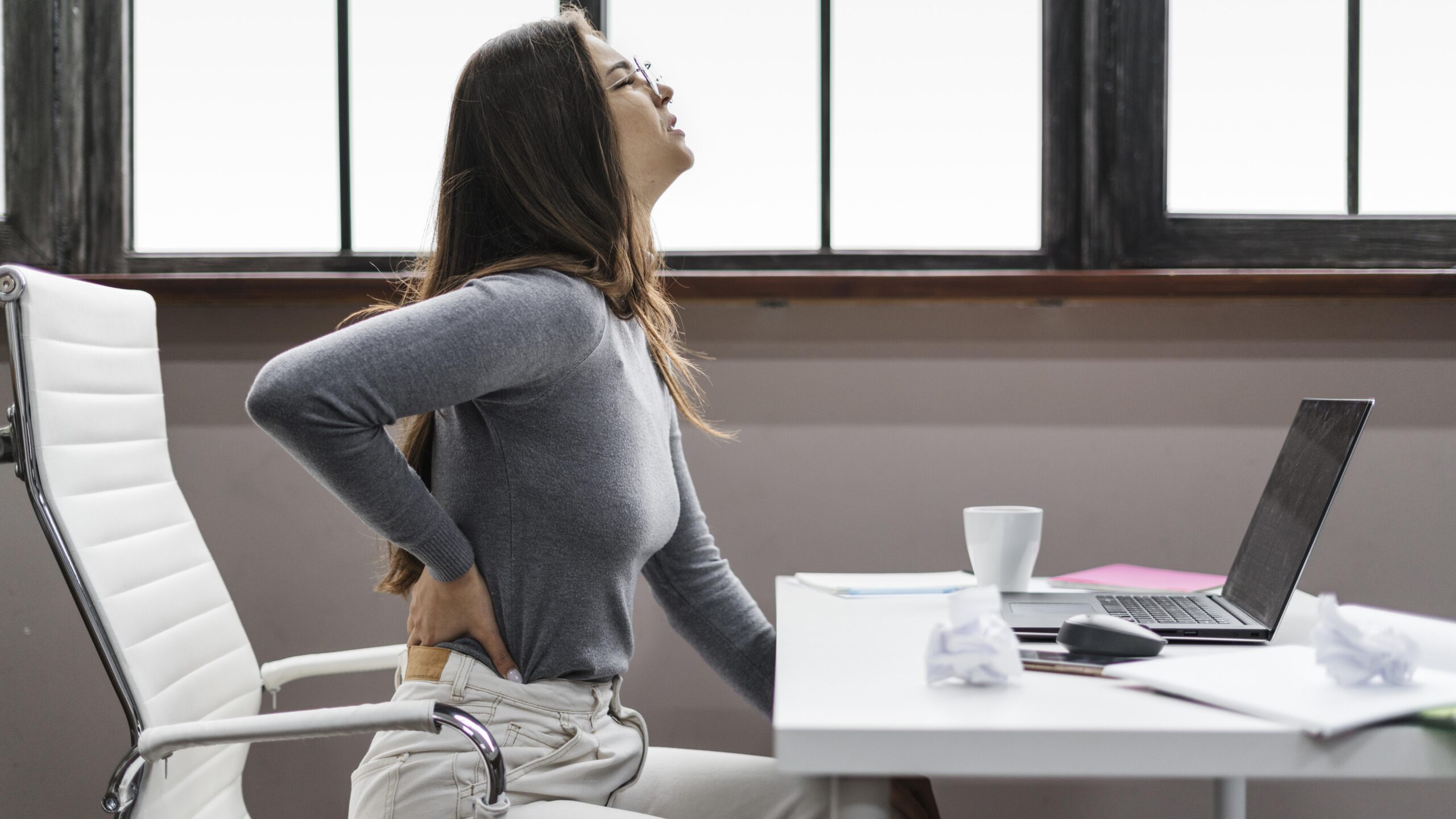Posture is more than just standing or sitting straight; it’s about how your body aligns with gravity. Poor posture can lead to a cascade of physical issues, one of which is muscle cramping. While cramps are commonly associated with dehydration or overexertion, posture plays a crucial role in muscle health and overall comfort. This article explores the connection between poor posture and cramps and offers practical tips for better body alignment.
Understanding the Link Between Posture and Muscle Cramps
1. What Are Muscle Cramps?
Muscle cramps occur when one or more muscles contract suddenly and without conscious control. They can last for a few seconds to several minutes and often cause sharp pain. While cramps can occur anywhere in the body, they are most common in the legs, feet, and back.
Common Causes of Cramps:
- Dehydration
- Electrolyte imbalances
- Overuse of muscles
- Prolonged inactivity
- Poor circulation
2. How Poor Posture Contributes to Cramps
Poor posture affects the alignment of your muscles, bones, and joints, placing undue stress on certain areas of the body. Over time, this stress can lead to muscle fatigue, tightness, and cramps. Here’s how:
- Muscle Imbalances: Poor posture often causes some muscles to overwork while others become weak. For instance, slouching can overstrain the back and neck muscles, leading to spasms or cramps.
- Restricted Blood Flow: Improper alignment can compress blood vessels, reducing oxygen and nutrient supply to muscles, which increases the risk of cramping.
- Nerve Compression: Misalignment of the spine or other body parts can put pressure on nerves, causing discomfort, pain, and muscle cramps.
- Prolonged Static Positions: Sitting or standing with poor posture for extended periods can reduce flexibility and lead to cramping in muscles that remain tense or overstretched.
Common Posture Problems That Lead to Cramps
- Forward Head Posture
- Characterized by the head jutting forward from the shoulders, this posture puts strain on the neck and upper back muscles.
- Associated Cramps: Neck, shoulders, and upper back.
- Rounded Shoulders
- Often caused by slouching or sitting at a desk for long hours, rounded shoulders can lead to tightness in the chest and weakness in the upper back.
- Associated Cramps: Upper back, chest, and arms.
- Anterior Pelvic Tilt
- This occurs when the pelvis tilts forward, creating an exaggerated curve in the lower back. It’s often due to prolonged sitting or weak core muscles.
- Associated Cramps: Lower back, hip flexors, and hamstrings.
- Slouching
- Slouching compresses the diaphragm, restricting breathing and leading to reduced oxygen supply to muscles.
- Associated Cramps: Lower back, shoulders, and abdomen.
- Crossed Legs While Sitting
- Sitting with crossed legs can misalign the hips and pelvis, leading to uneven muscle tension.
- Associated Cramps: Thighs, calves, and hips.
Tips for Better Body Alignment
Improving posture can help reduce muscle cramps and prevent other posture-related issues. Here are some actionable tips:
1. Maintain Neutral Spine Alignment
- Your spine has natural curves in the cervical, thoracic, and lumbar regions. Ensure these curves are supported by avoiding excessive arching or flattening of the back.
- Tip: Use ergonomic chairs that provide lumbar support, especially if you sit for long hours.
2. Strengthen Core Muscles
- Maintaining good posture and supporting your spine are two benefits of having a strong core.
- Exercises: Planks, bridges, and abdominal crunches can strengthen the core and reduce the risk of cramps in the lower back and hips.
3. Practice Good Sitting Habits
- With your knees at a 90-degree angle and your feet flat on the floor, take a seat.
- Avoid slouching or leaning forward excessively.
- Tip: Adjust your chair and desk height to keep your computer screen at eye level.
4. Stretch Regularly
- Stretching helps release muscle tension and improve flexibility, reducing the likelihood of cramps.
- Key Stretches:
- Hamstring Stretch: To relieve tension in the back of the thighs.
- Chest Stretch: To counteract rounded shoulders.
- Neck Stretch: To alleviate tension caused by forward head posture.
5. Be Mindful of Your Standing Posture
- Distribute your weight evenly on both feet.
- Keep your shoulders relaxed and aligned with your hips.
- Avoid locking your knees while standing.
6. Use Ergonomic Tools
- Invest in ergonomic furniture, such as adjustable desks, chairs, and footrests.
- Use a lumbar roll or cushion for lower back support when sitting.
7. Incorporate Movement Into Your Day
- Avoid staying in one position for too long, as this can lead to muscle stiffness and cramps.
- Tip: Take short breaks every 30 minutes to stretch or walk around.
8. Focus on Proper Sleep Posture
- Sleeping in an awkward position can strain your muscles and lead to cramps.
- Tip: Sleep on your back or side with a supportive pillow under your head and between your knees (if side-sleeping).
Exercises to Improve Posture and Prevent Cramps
- Cat-Cow Stretch
- enhances spinal suppleness and eases back strain.
- How to Do: On all fours, alternate between arching your back (cow) and rounding it (cat).
- Wall Angels
- enhances shoulder alignment and strengthens the upper back.
- How to Do: Stand with your back against a wall and move your arms up and down in a “snow angel” motion.
- Pelvic Tilts
- Strengthens the lower back and core, addressing anterior pelvic tilt.
- How to Do: Lie on your back with knees bent, then tilt your pelvis upward and downward.
- Chin Tucks
- lowers neck strain and straightens the forward head posture.
- How to Do: Gently tuck your chin toward your chest, keeping your back straight.
- Bridge Pose
- stretches the hip flexors and strengthens the lower back and glutes.
- How to Do: Raise your hips toward the ceiling while lying on your back with your knees bent.
When to Seek Professional Help
If you experience frequent or severe cramps despite improving your posture, it may be time to consult a healthcare professional. A physical therapist or chiropractor can assess your posture, identify imbalances, and recommend targeted exercises or treatments.
Signs You May Need Help:
- Persistent muscle cramps that interfere with daily activities.
- Difficulty maintaining proper posture due to pain or stiffness.
- Numbness or tingling sensations in addition to cramps.
Conclusion
Poor posture is a common yet often overlooked cause of muscle cramps. By understanding how misalignment affects your body and taking steps to improve your posture, you can significantly reduce the occurrence of cramps and enhance your overall well-being. Simple changes, such as maintaining a neutral spine, strengthening your core, and incorporating regular stretching, can make a world of difference. Remember, good posture is not just about appearance—it’s a cornerstone of a healthy, pain-free life.



